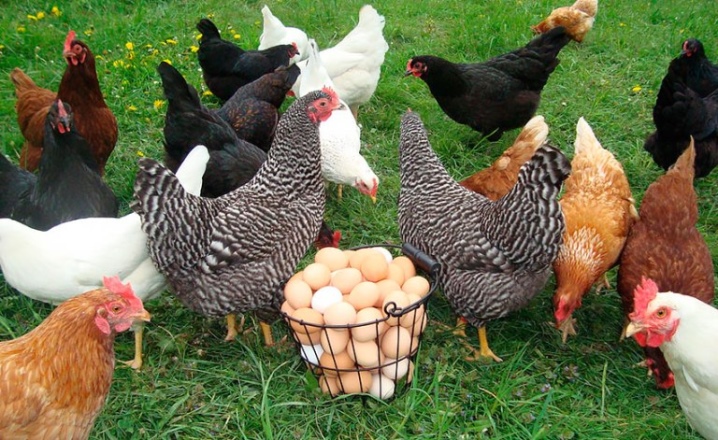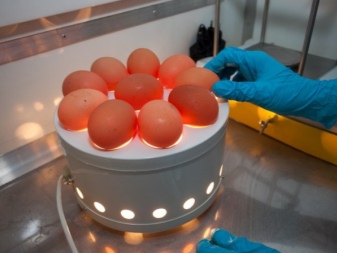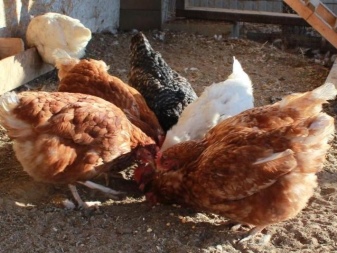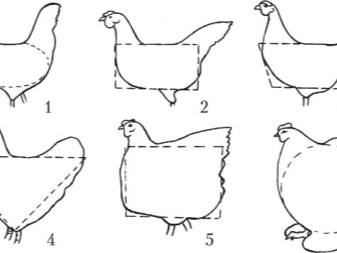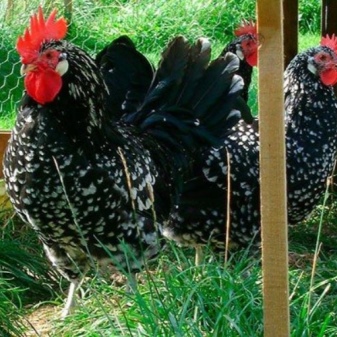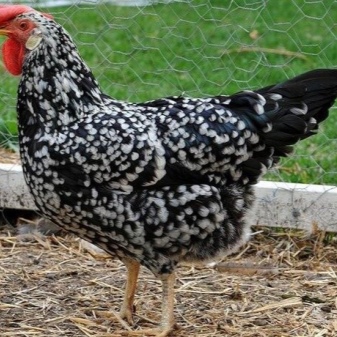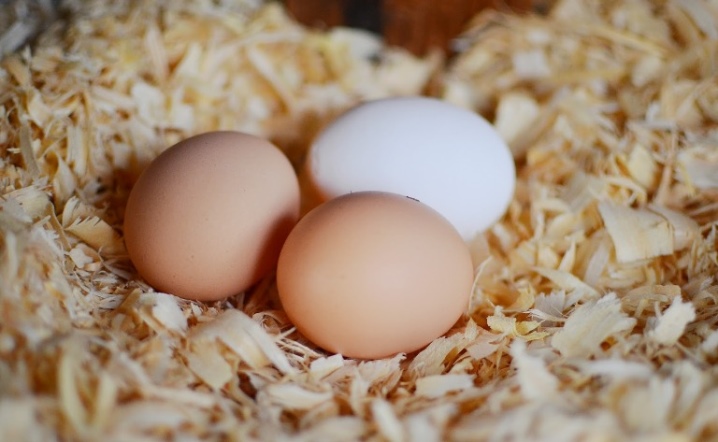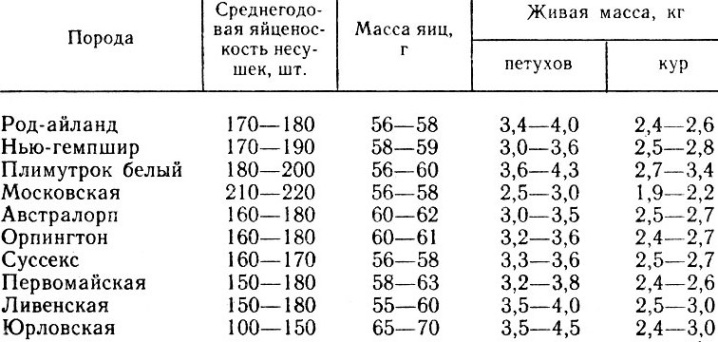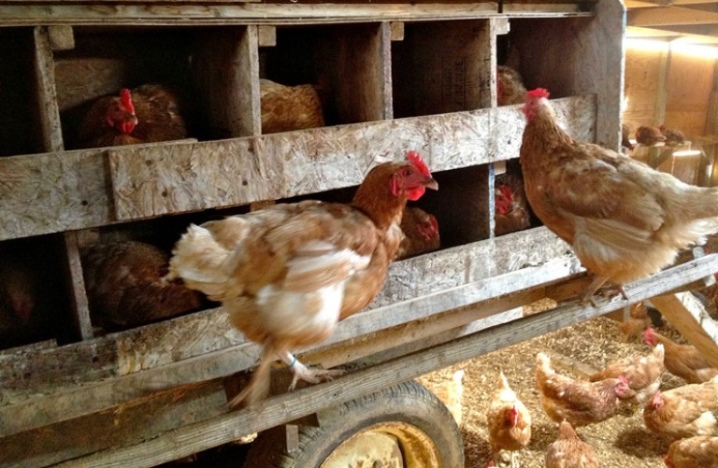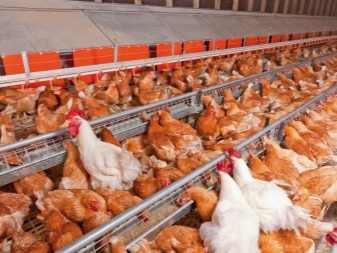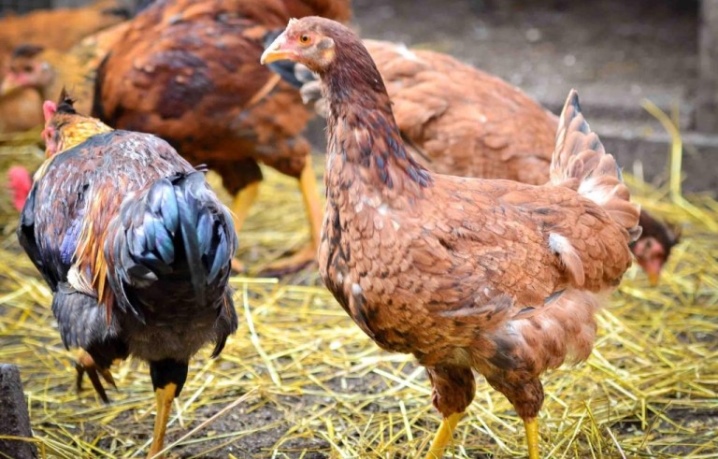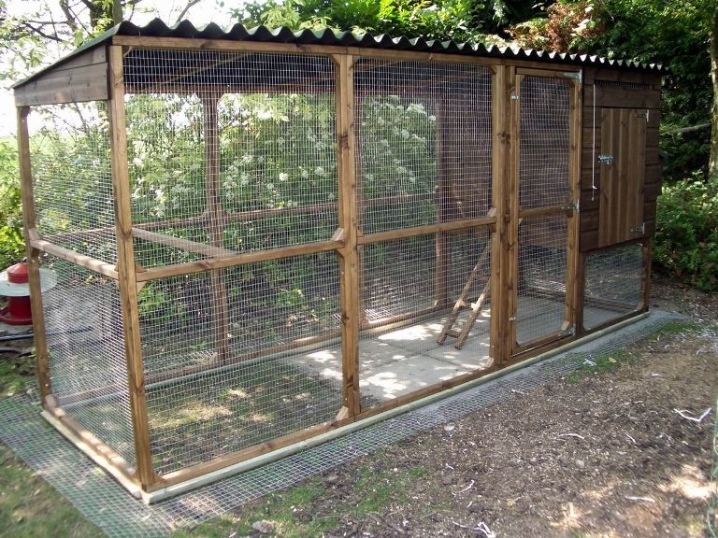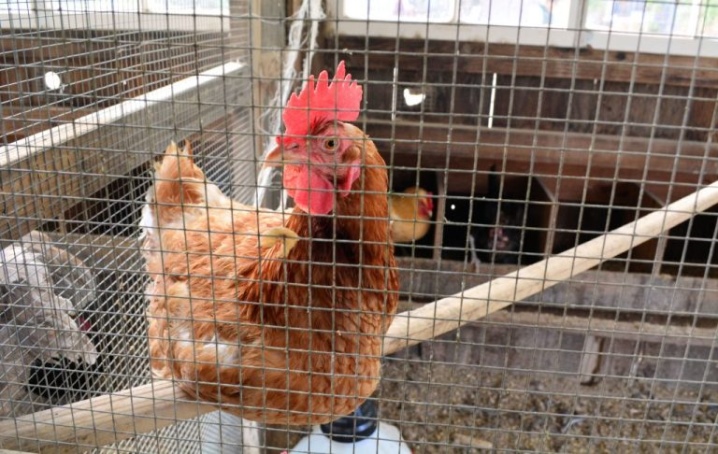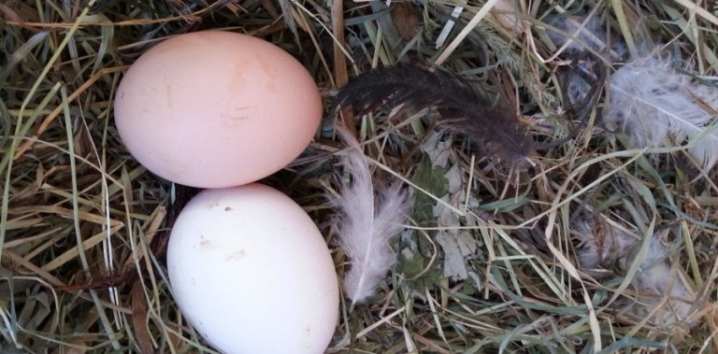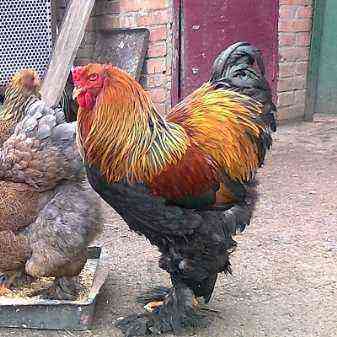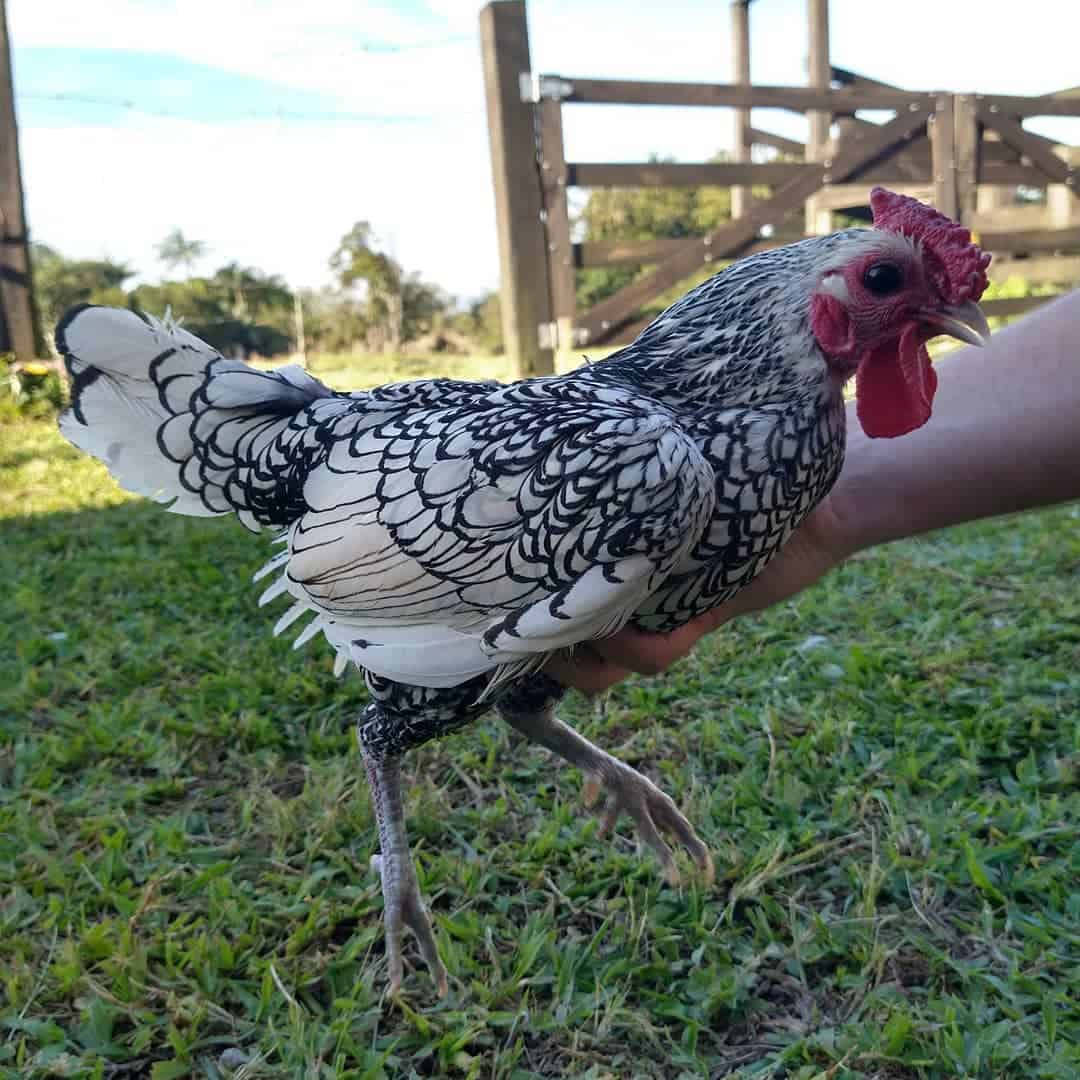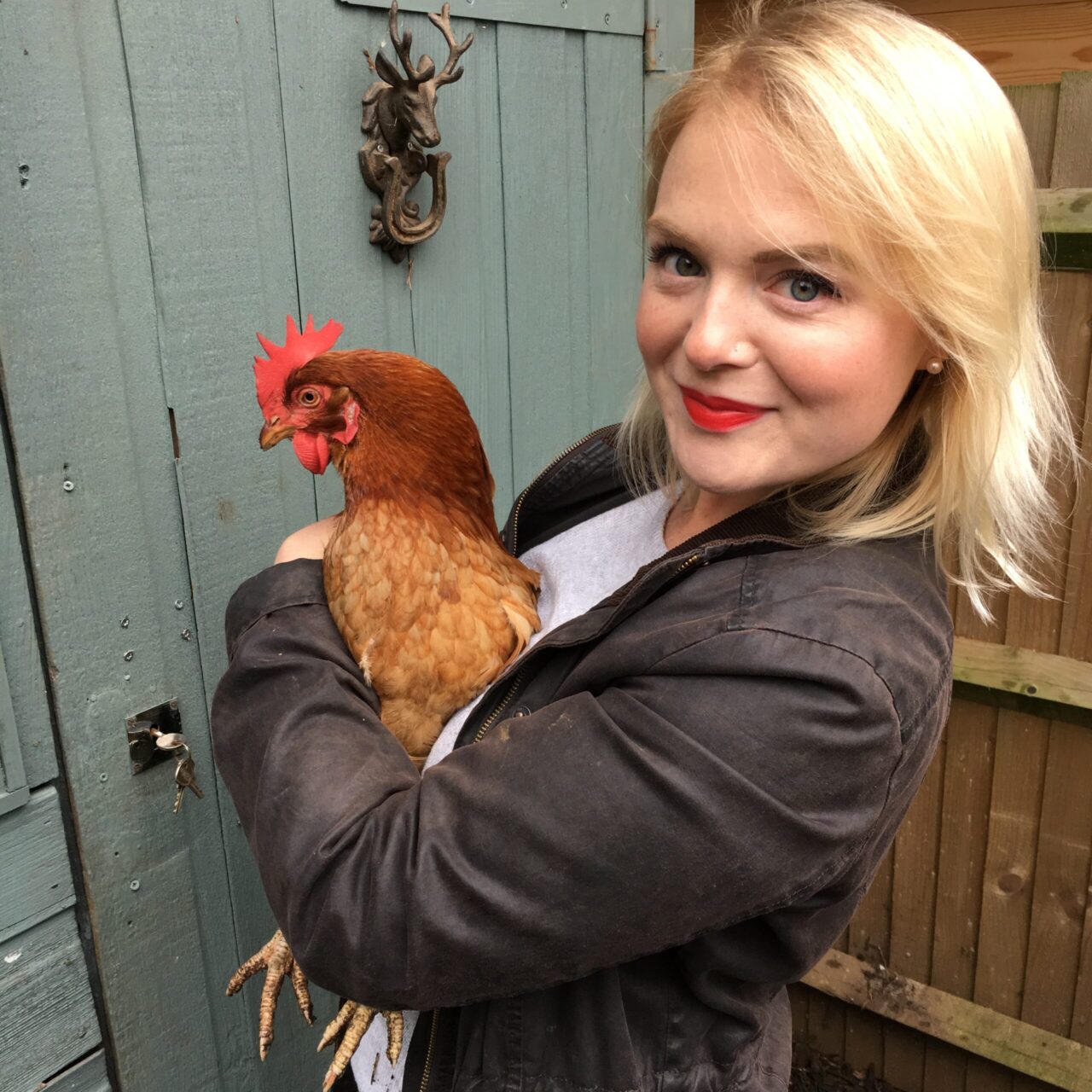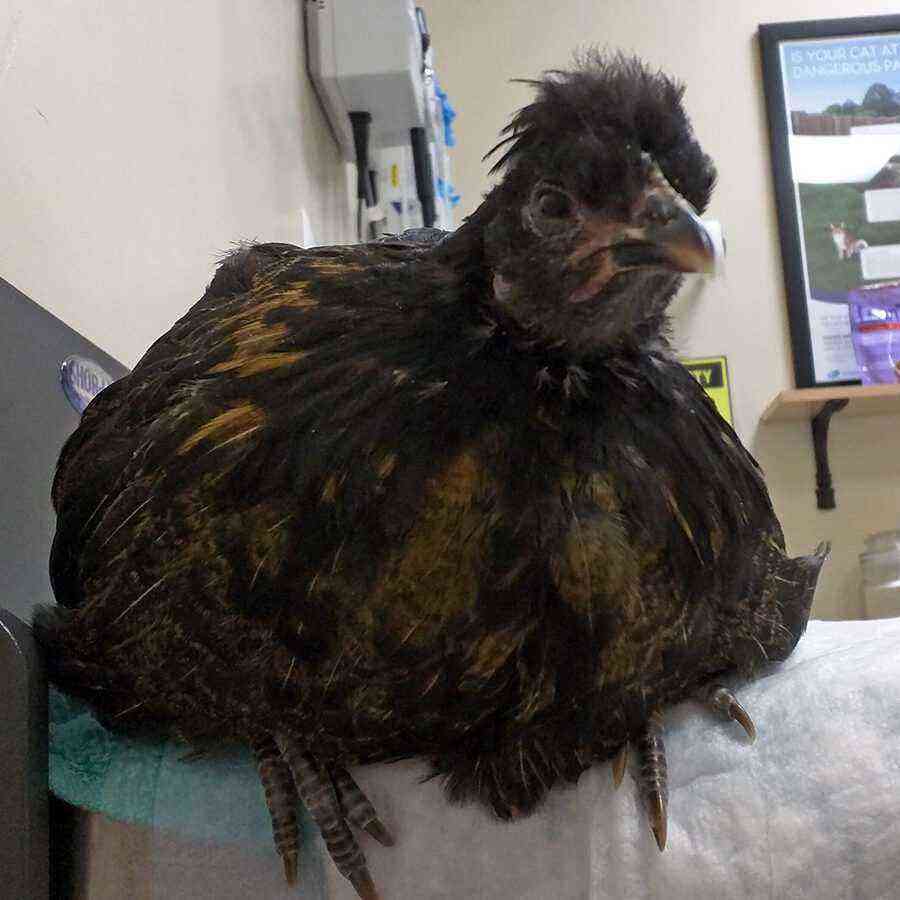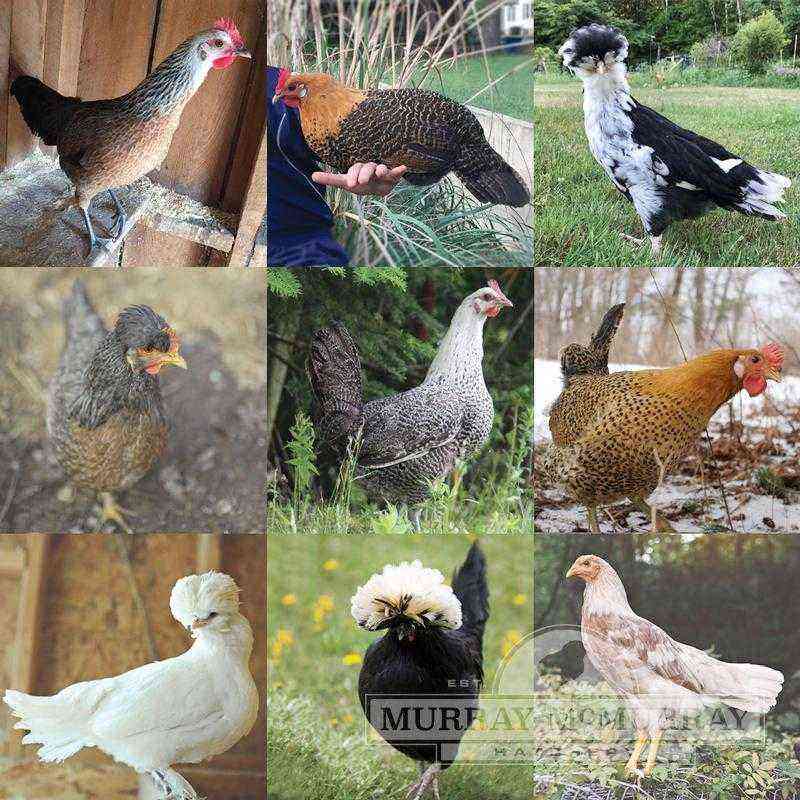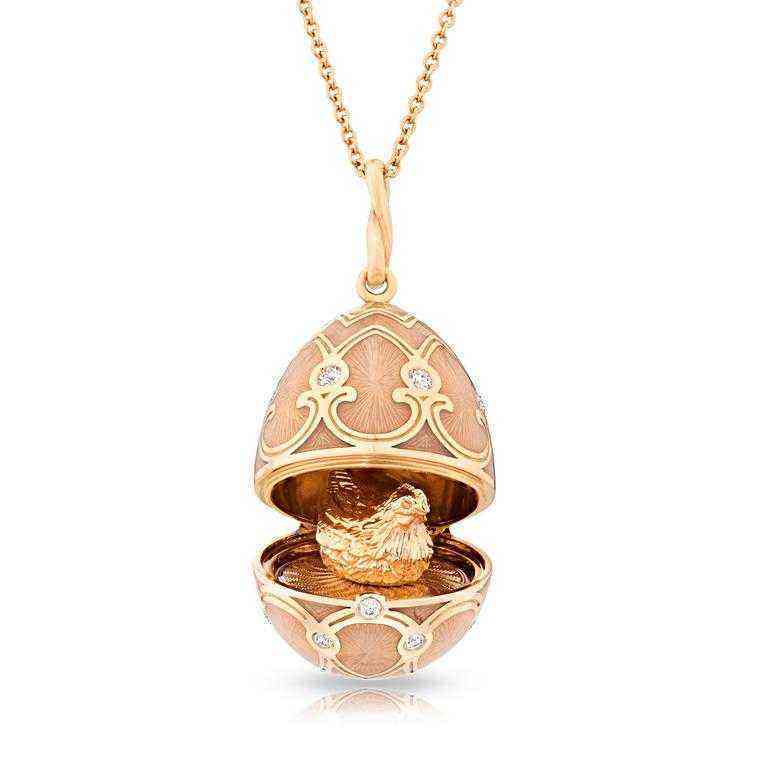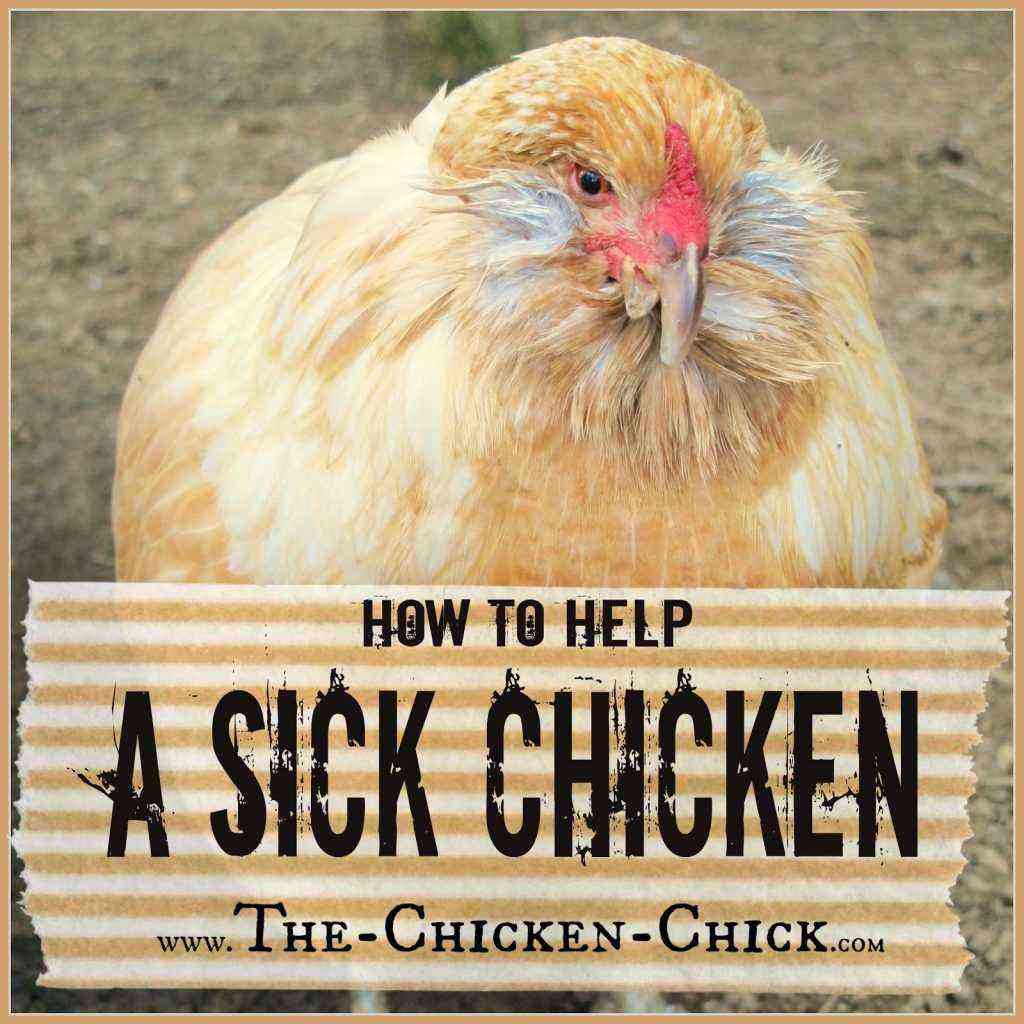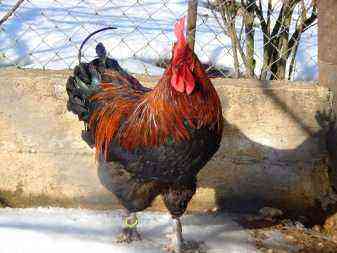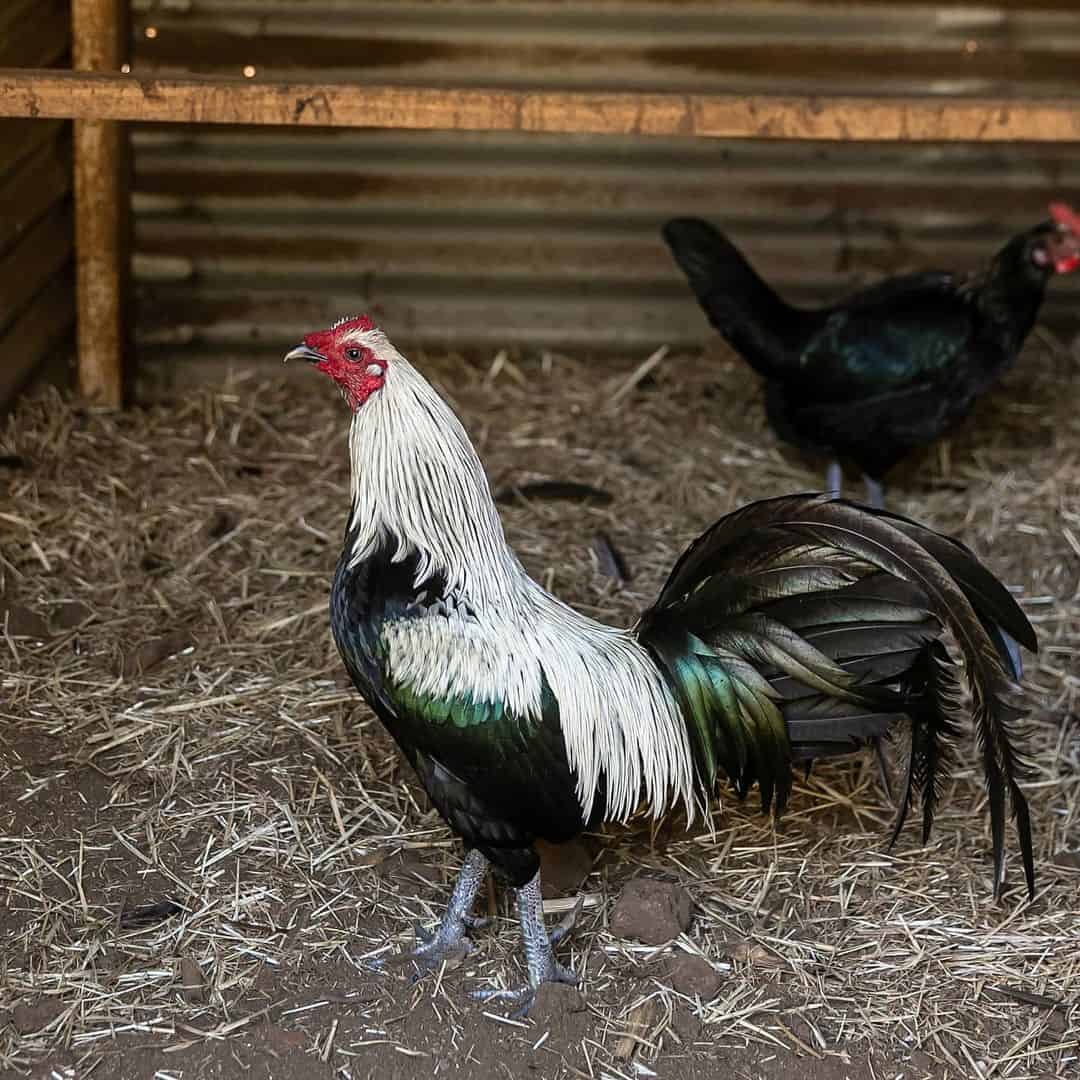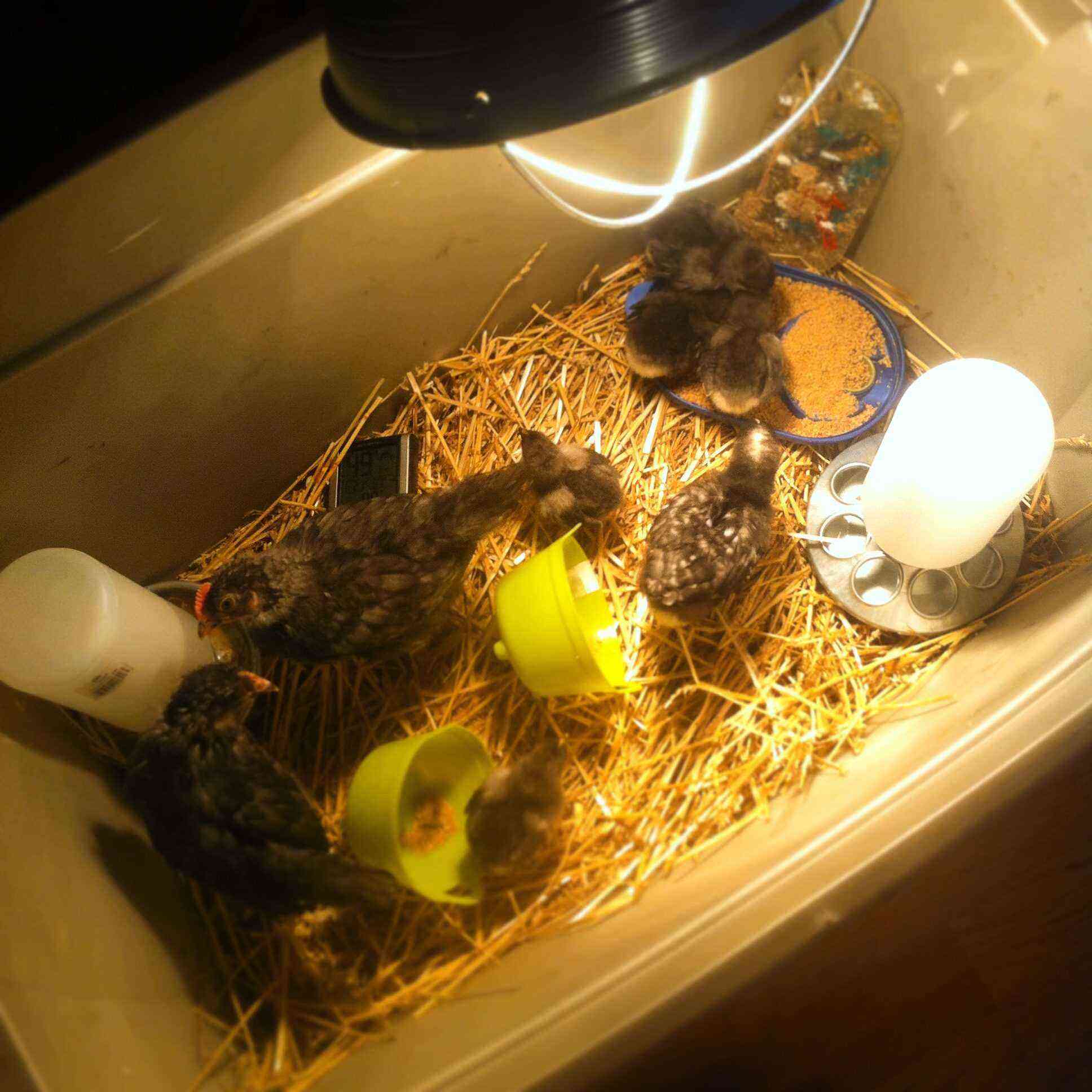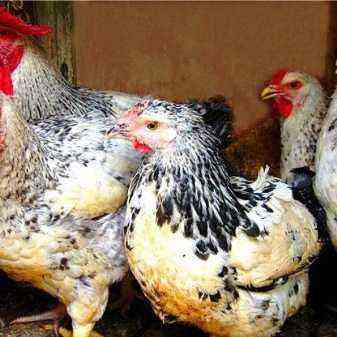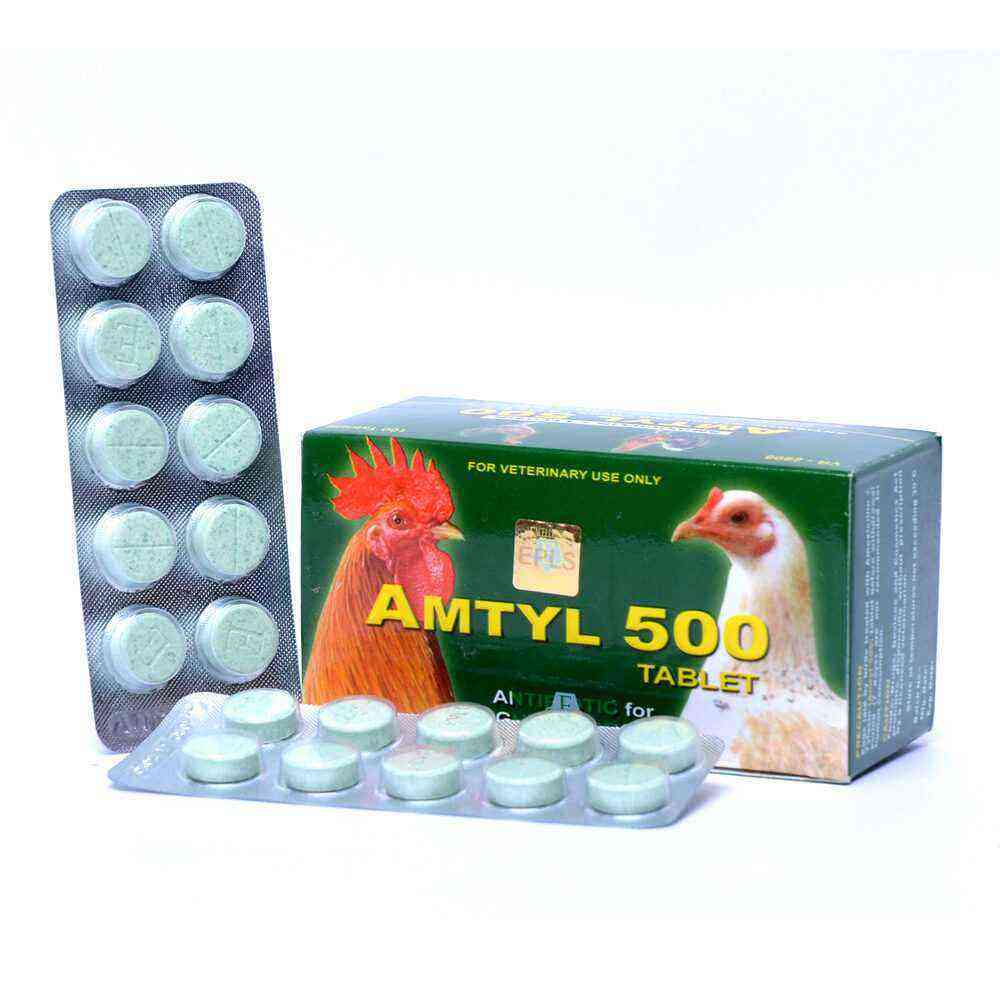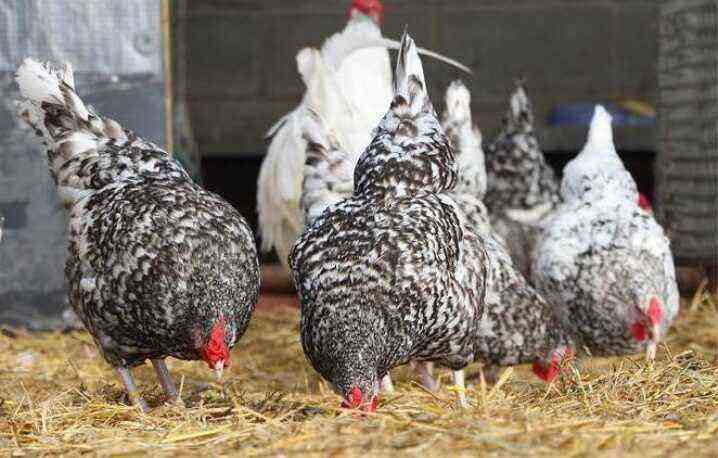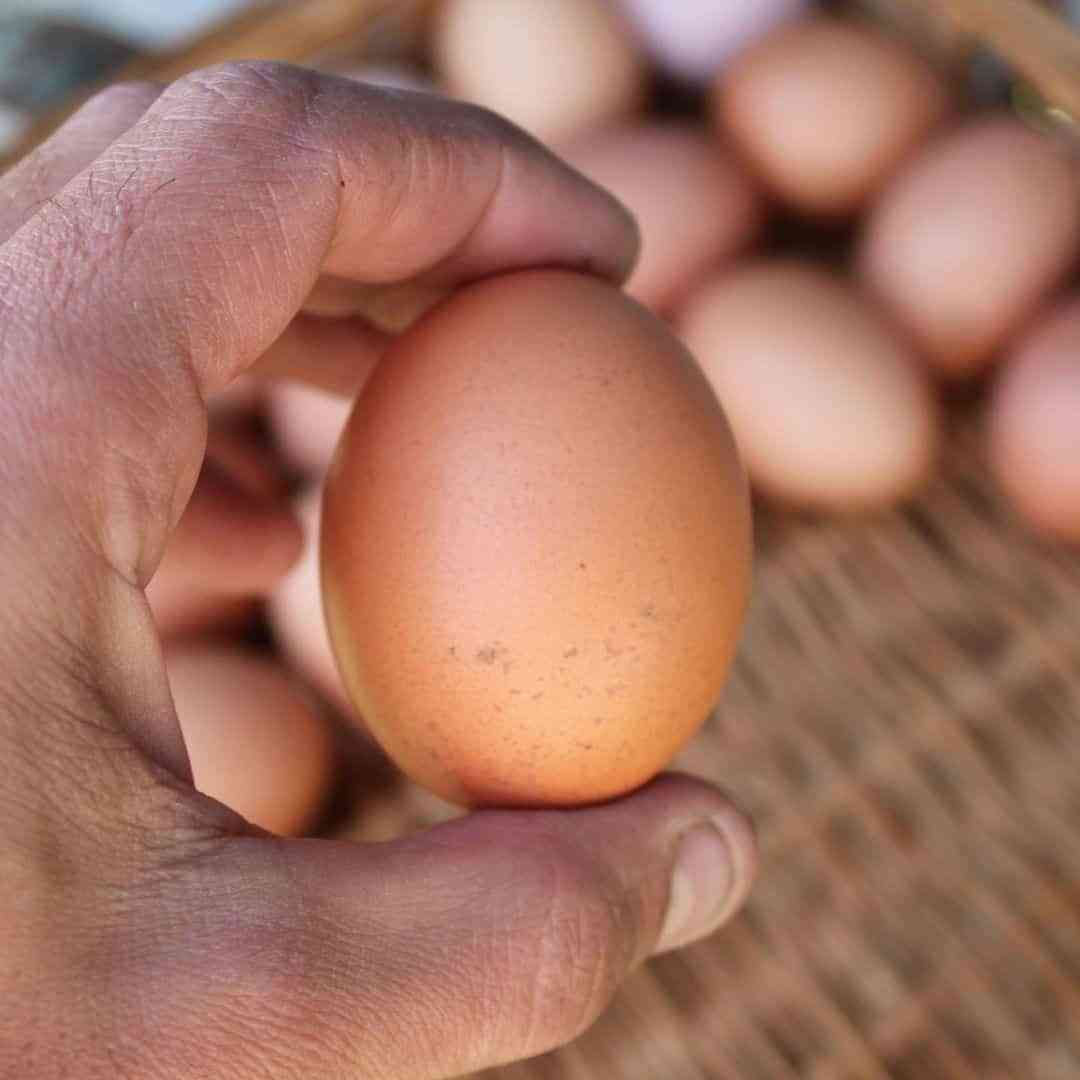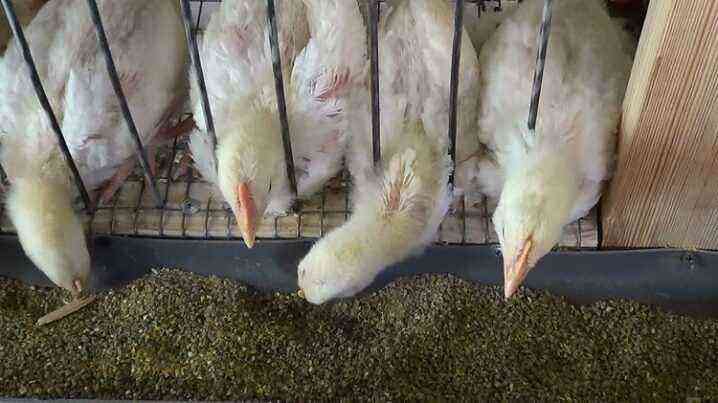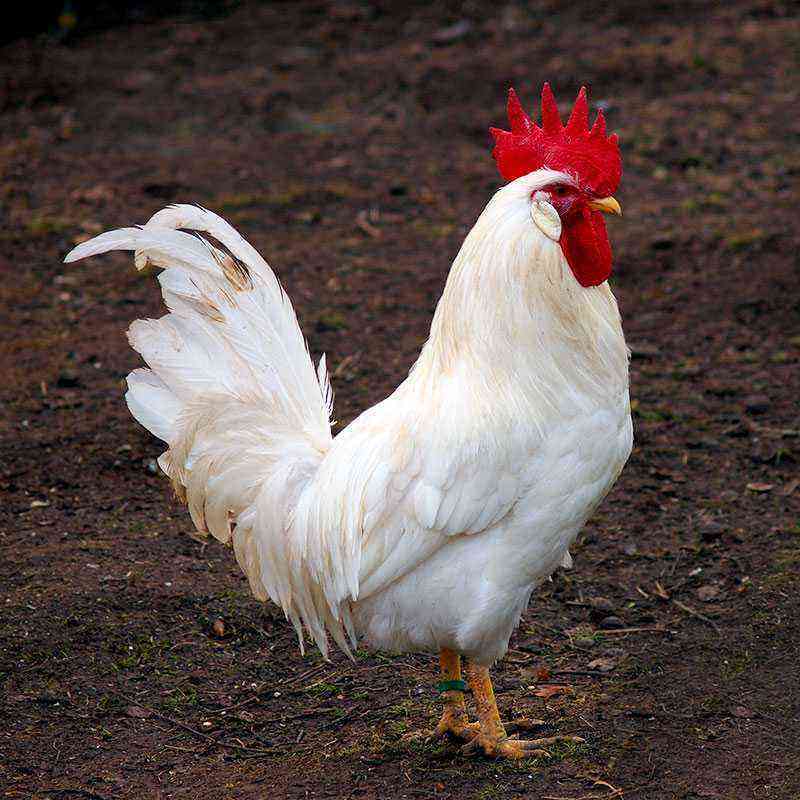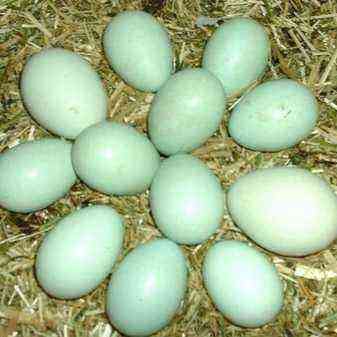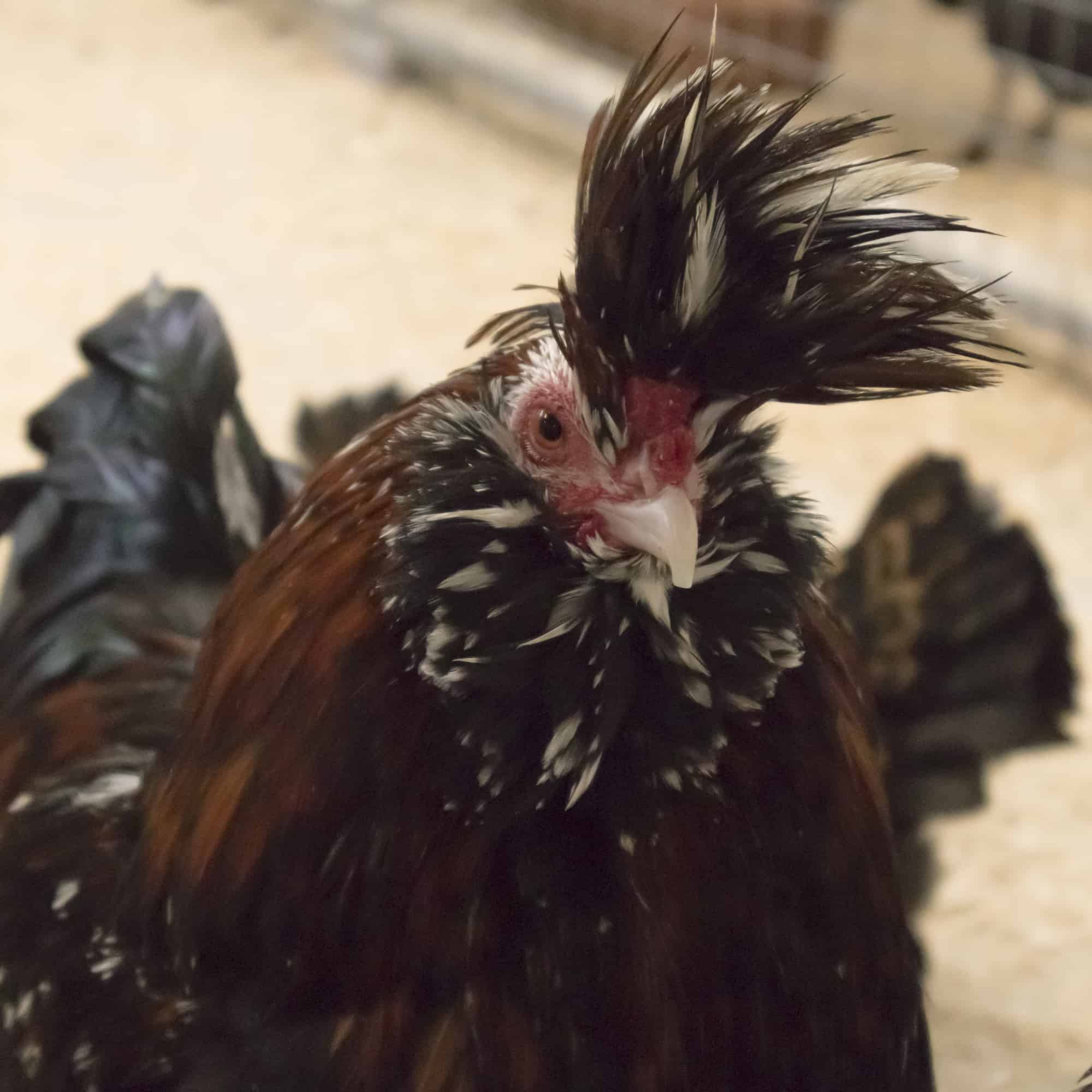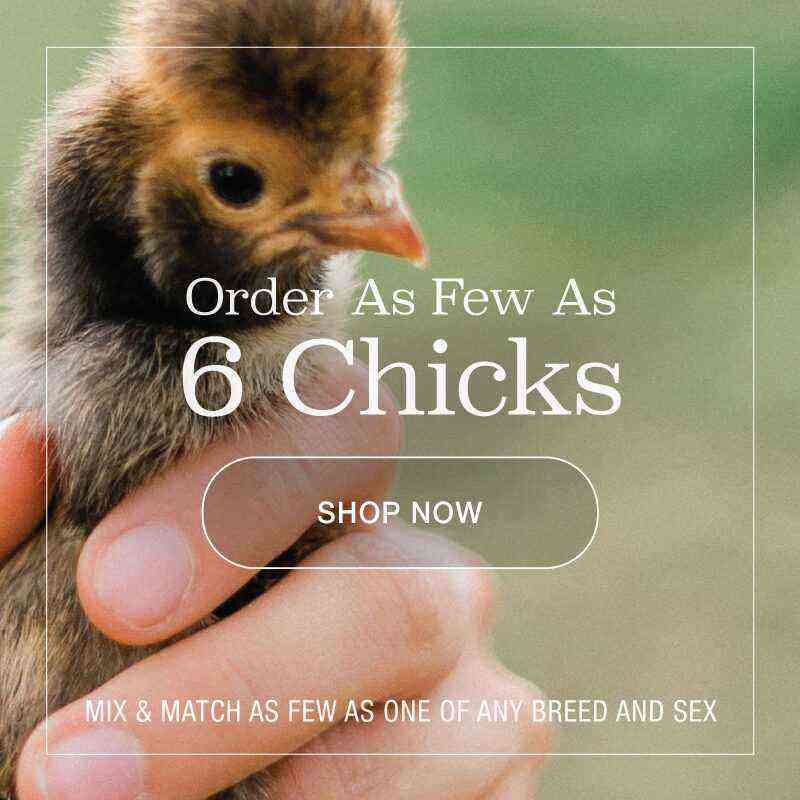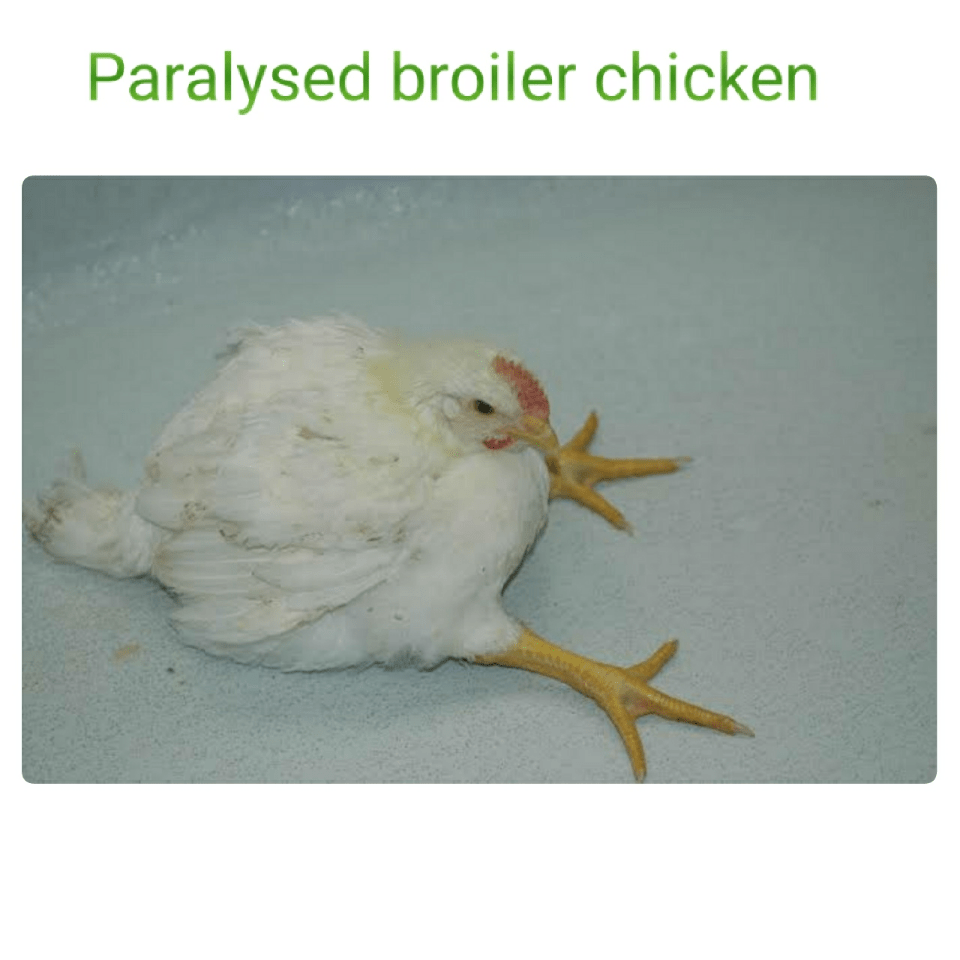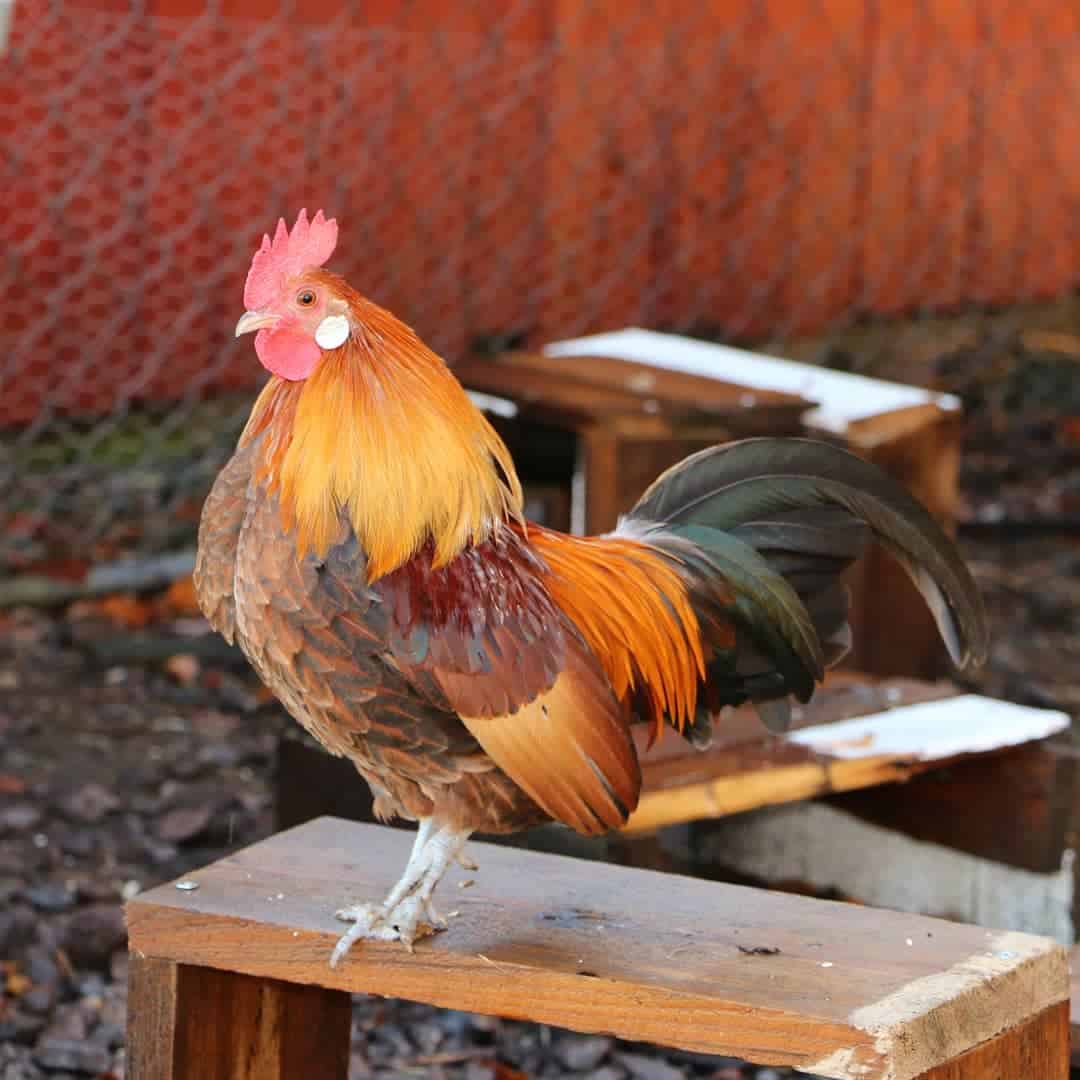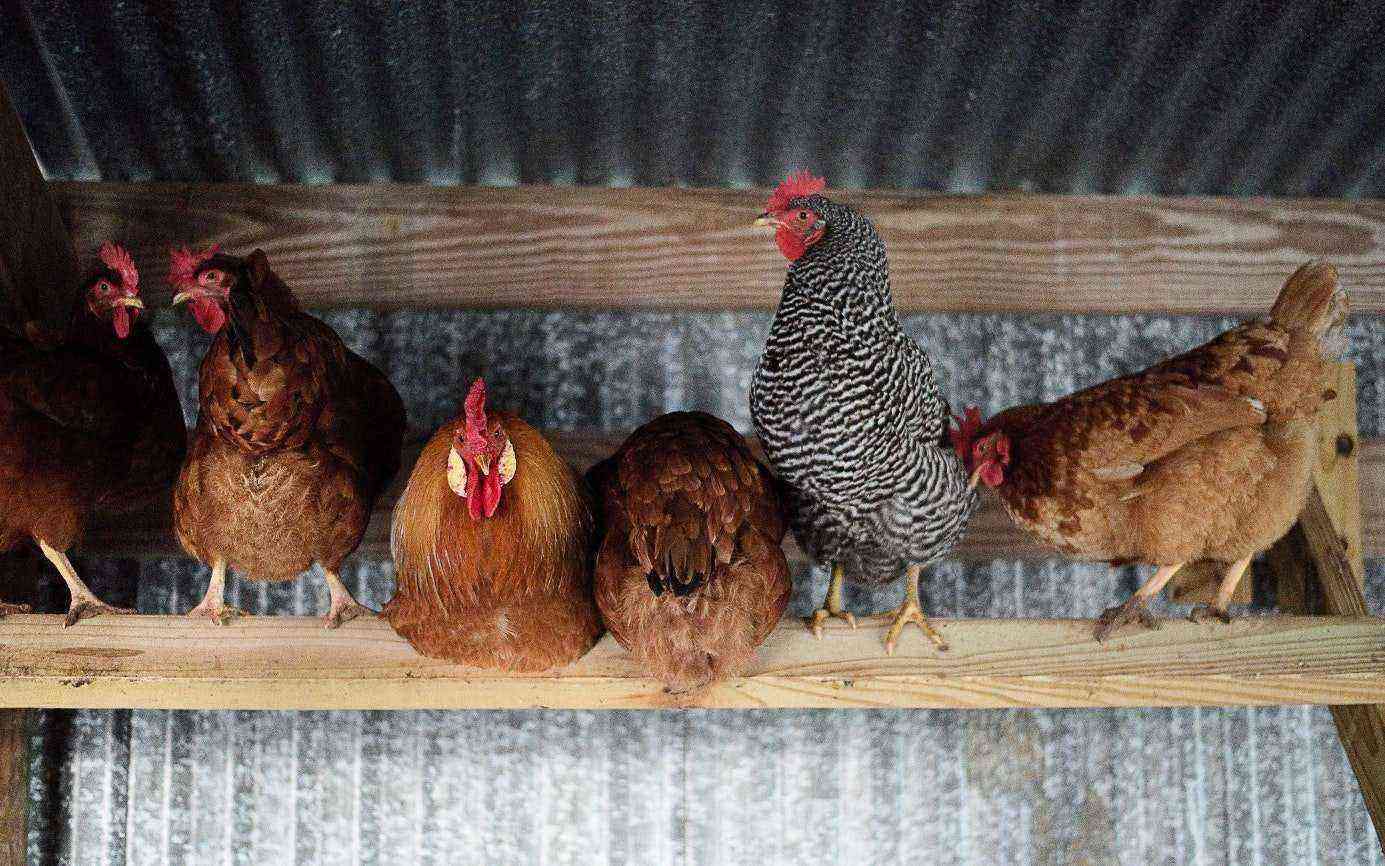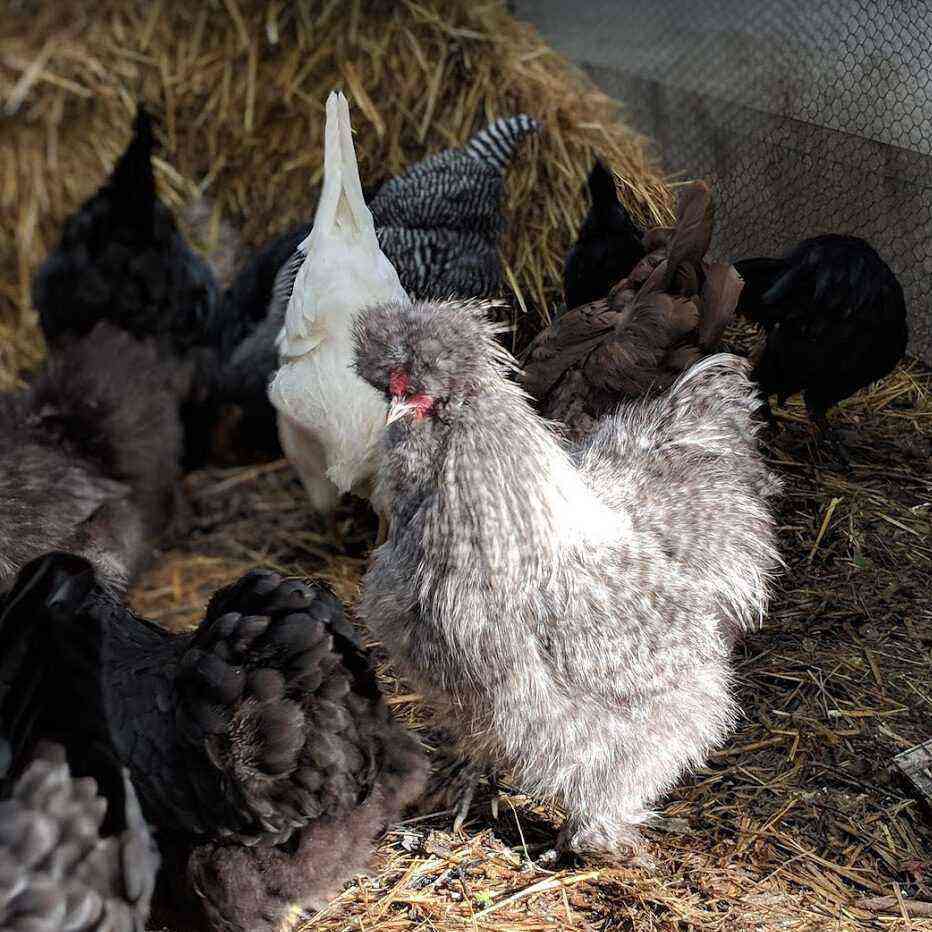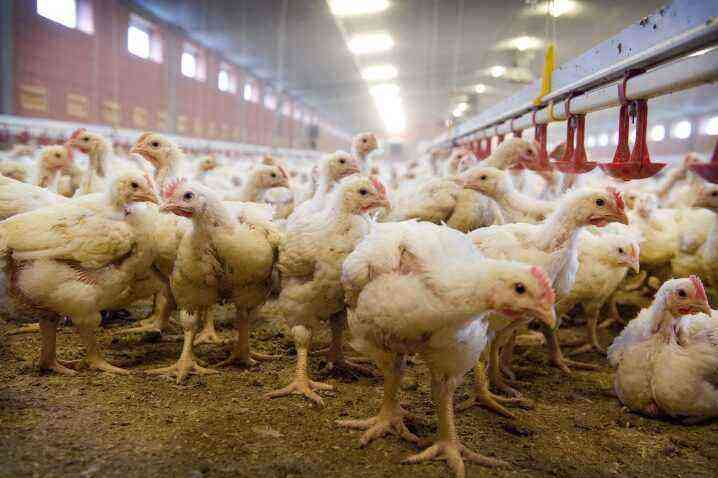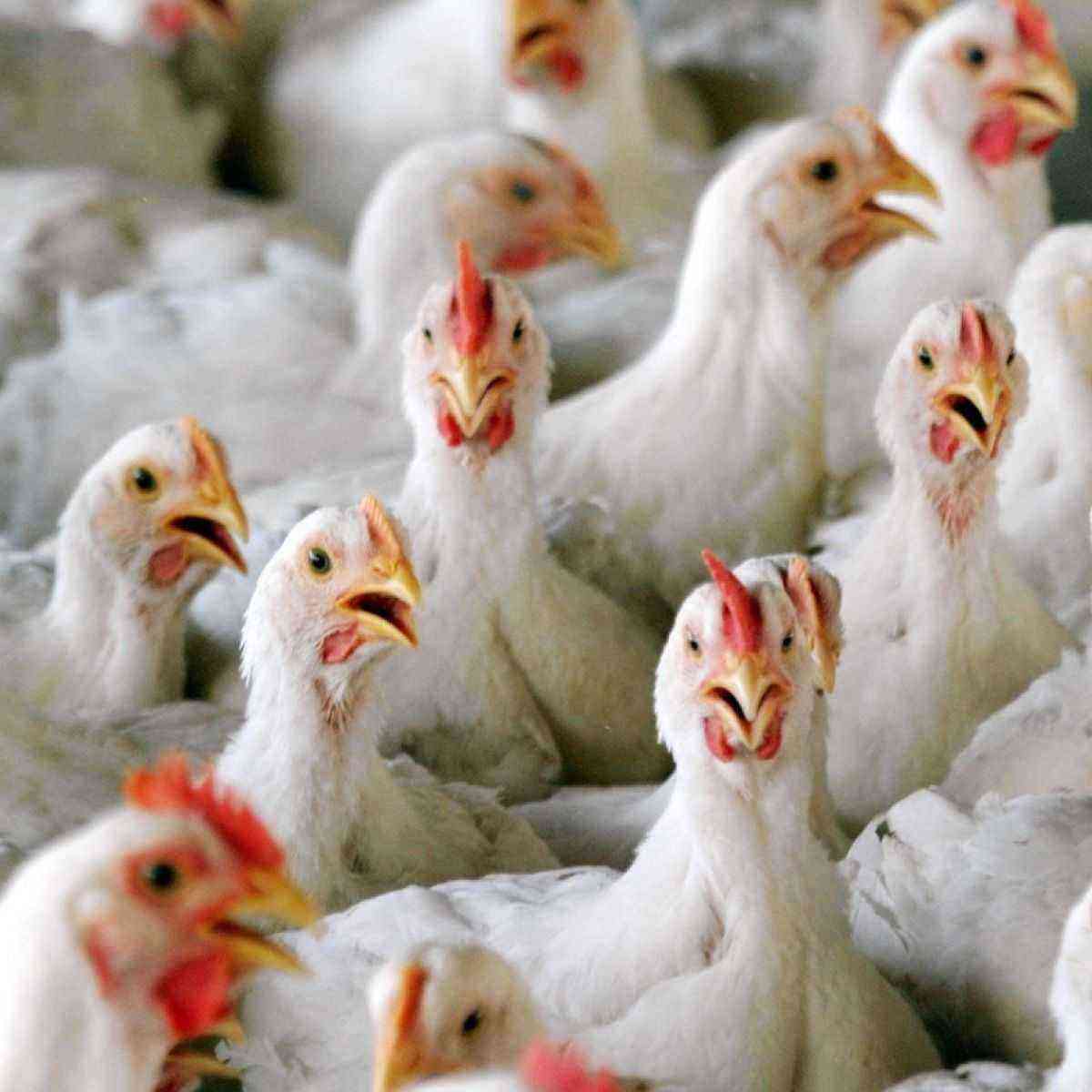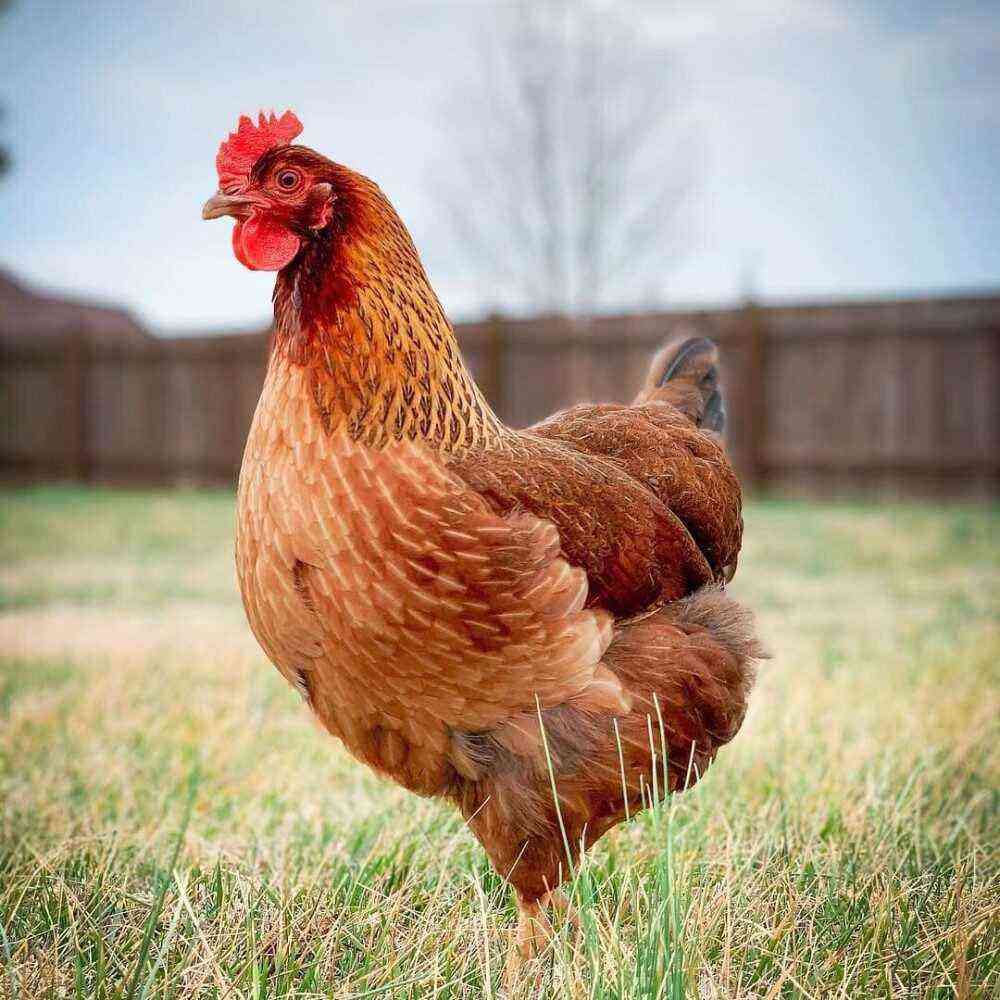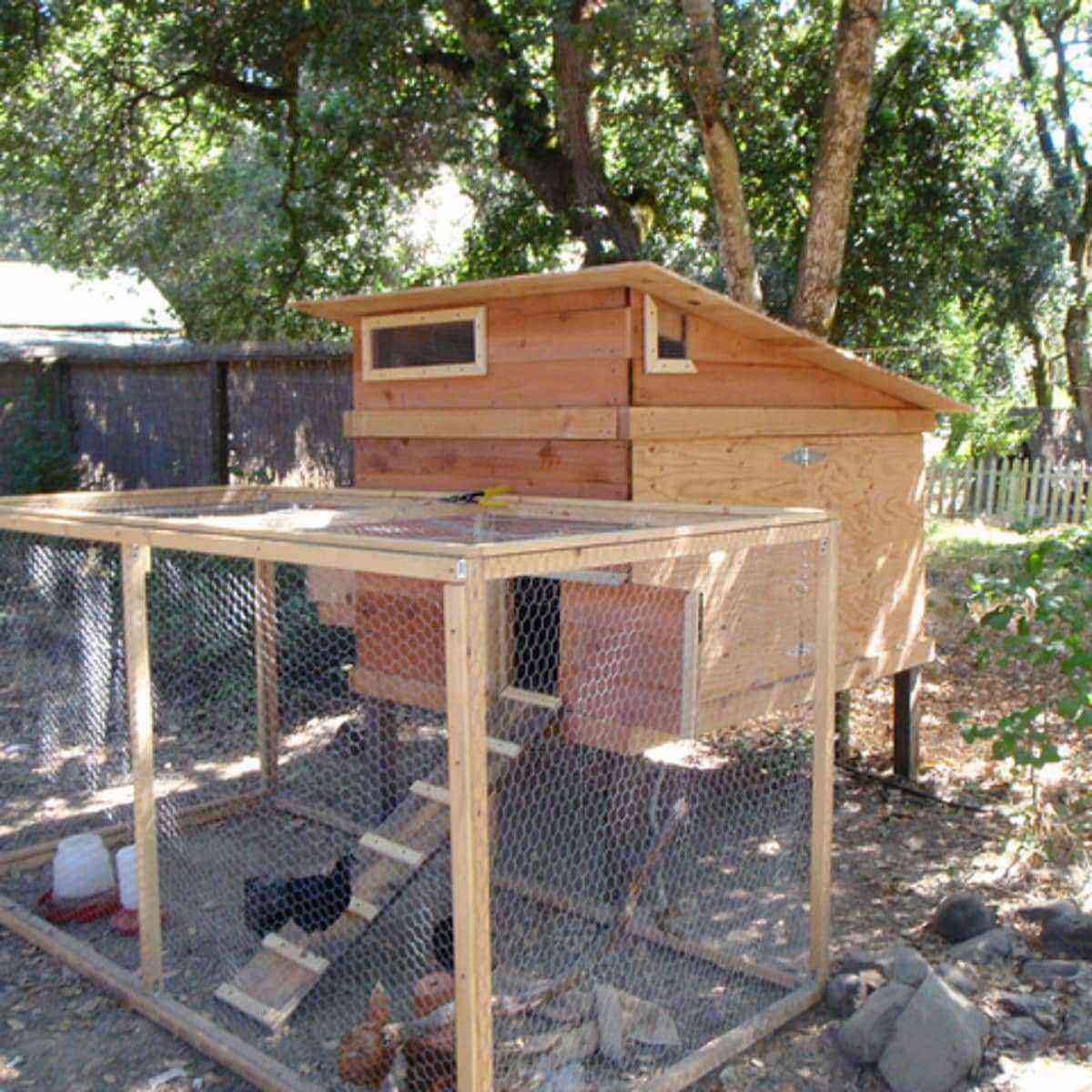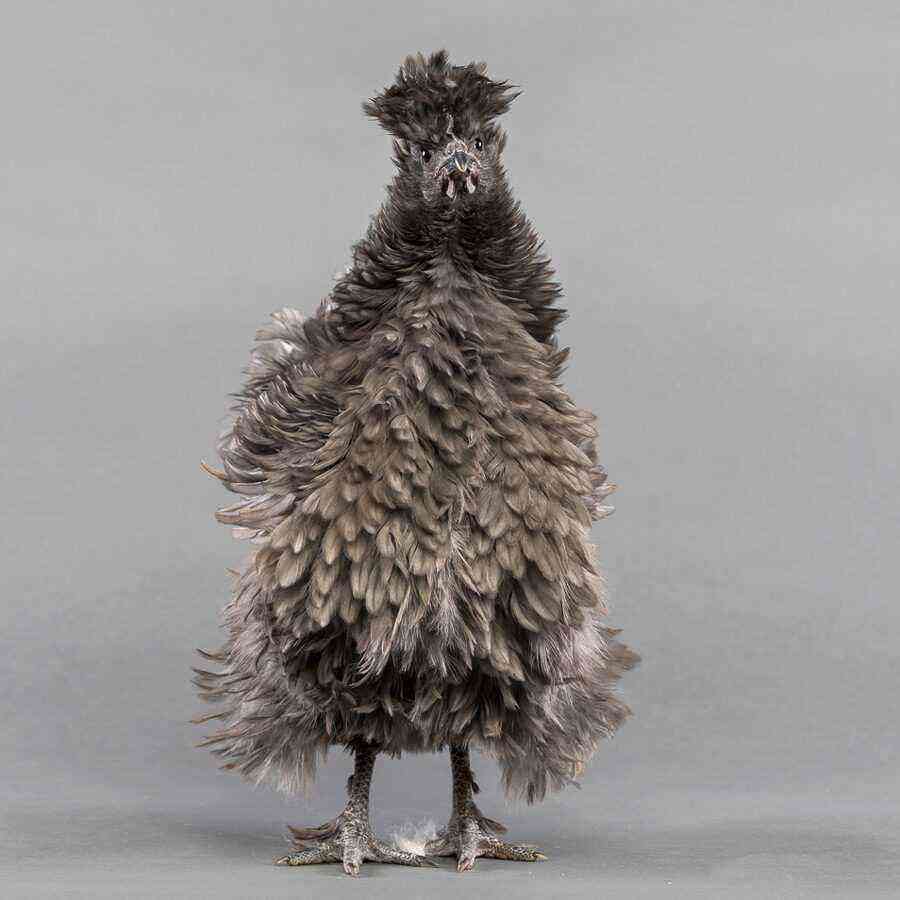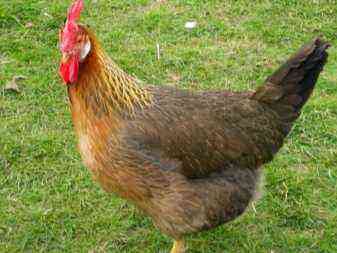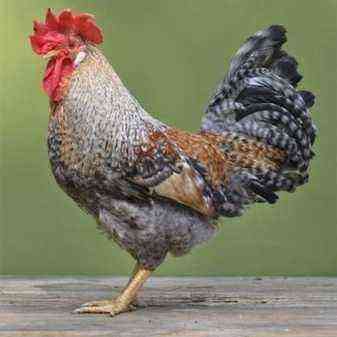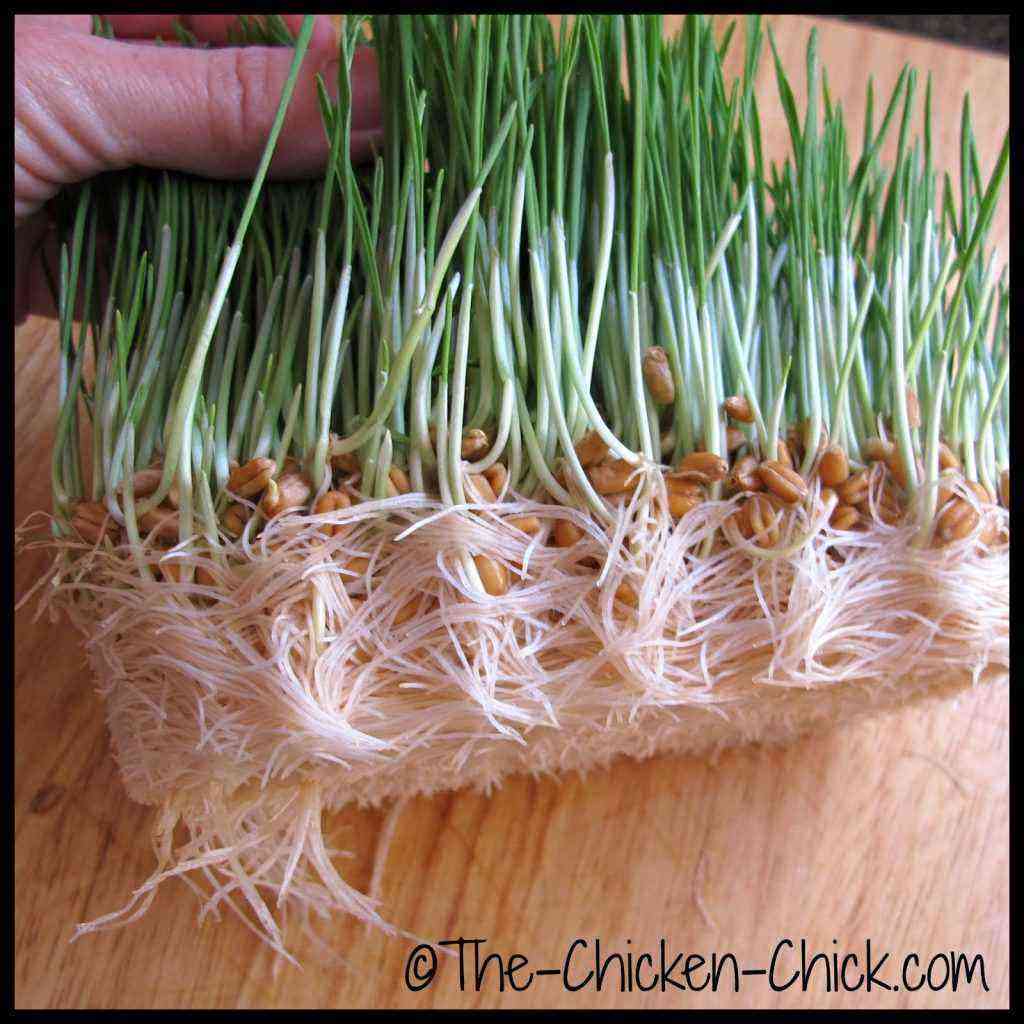Chickens are one of the most productive and easy-to-breed poultry. During the domestication of the wild jungle chicken, a large number of breeds of chickens of various orientations were bred. Humanity is breeding these birds for the sake of obtaining meat, eggs, feathers and down. Egg breeds of chickens are the most popular and widespread, they grow quickly and ripen quite early. Chickens are bred in backyards and on an industrial scale in poultry farms. Laying hens are able to lay eggs for up to 10 months a year, with each hen producing up to 250-300 eggs per year.
Chicken eggs are used as food all over the world. According to its structure, it consists of a shell, protein, yolk and an inner film-shell. The shell and shell are the protective barrier of the embryo from the environment. The sun’s rays and the rays of the artificial spectrum penetrate well through the shell, so the quality of eggs is traditionally checked by shining them with an ovoscope. The protein part occupies up to 60% of the volume of the egg, and the yolk accounts for no more than 30%, but nevertheless it is the yolk that is the most valuable component.
The weight of a chicken egg depends on the breed of chickens and can range from 50 to 95-100 grams. Depending on the weight, the egg category is determined, starting from CO and ending with C3. The highest category includes eggs weighing 75 grams or more.
Description of laying hens
Domestic chicken is a direct descendant of the pheasant family. In appearance, the chicken looks like an ordinary bird – it has a pair of legs, wings, a feather cover and a short tail. Chicken paws have claws, but are devoid of membranes, since the bird lives on the ground and can neither fly nor swim. The color of plumage in chickens directly depends on their breed, but most often you can find white, brownish-red or variegated individuals. Roosters have a brighter color than hens, they have well-defined long tail feathers, and on their paws there are outgrowths resembling spurs. Laying hens have a body weight of no more than 2 kg, and sometimes 3 kg, while a rooster can reach a weight of up to 5 kg.
In thoroughbred laying hens, the process of puberty quickly sets in and they are able to lay eggs already at the age of 5 months. A young chicken gains its full weight by 50-70 days from the moment of birth. With good care, chickens live quite a long time, their life expectancy can be from 12 to 16 years. But, as a rule, not a single hen lives up to such a venerable age for the reason that at the age of 3 years, her ability to lay eggs decreases and she is slaughtered. The decorative breeds of chickens, which are kept not for the sake of meat and eggs, but for their decorative beauty, have the longest chance of living in the household.
Chickens of egg breeds genetically have not only a small body weight, but also thin, light bones – such a structure allows them to be more active, mobile. In such chickens, the comb and earrings are usually well developed, and the feathers fit snugly to the body. In egg and meat-egg breeds, immunity is well developed. They adapt well to free-range conditions and can even find their own food. However, in order for egg production to be high, chickens need care and proper feeding, which invariably affects not only the size of the egg, but also its quality.
Breeds
It is best to choose breeds of domestic egg chickens that have been bred by breeding in relation to your or nearby region. These breeds may have average egg production, but will tolerate local weather conditions well and be able to supplement their daily diet with pasture.
Laying hens for home breeding are represented by the following breeds.
Ancona
The weight of the chicken is average (1,5-2 kg), they produce 200-250 eggs per year, the weight of the egg is from 45 to 60 grams. The breed is suitable for the southern regions of Russia. Chickens feel good on the walking content, are active in obtaining pasture. The incubation instinct is underdeveloped. Ancona has shiny black dense feathers with white speckles. The beak is yellow in color, there are no feathers on the legs. Chicks have a low early mortality rate and quickly reach sexual maturity.
Keeping requires a chicken coop with a spacious area for walking and a high net, as chickens can take flight. This breed tolerates winter frosts well, but the chicken coop must be dry and insulated.
Ameraukana
The weight of the chicken is medium heavy (2–3,5 kg), they bring 200–250 eggs per year; these hens lay large eggs weighing over 60 grams. The breed is equally well suited for the northern and southern regions of Russia. The bird is very hardy, adapts well when kept without walking, in addition to the main diet, pasture is useful for it. The breed requires an additional amount of calcium in the diet, as when laying eggs, the body of the chicken quickly depletes its reserves.
Purebred laying hens lay colored eggs – white, greenish, blue and pinkish in color. Feathers can have a wide variety of colors. You can distinguish the breed by the feathers located on the head in the form of sideburns and several feathers in the chin area. The tail of the chickens is fully developed and resembles a cock. Real Ameraukan can only be bought from professional breeders, as it is a rare breed.
Andalusian chicken
Chicken weight is average (1,6-2 kg), egg production is 150-200 eggs annually, medium-sized eggs weighing 40-60 grams. A laying hen lays 3 eggs per day. The breed is suitable for breeding in the southern and northern regions of Russia. Unpretentious to the conditions of detention, egg laying continues even in deep winter. Thanks to the dense plumage, chickens are not afraid of frost.
The breed is adapted to cage keeping, but is best suited for foraging outdoors. The incubation instinct is poorly developed, but chickens can run fast.
The plumage has a dark blue tint with a black edging along the edge of the feather. The beak is black, sharp.
Araukana
Chicken weight is average (from 1,6 to 2 kg), egg production is average, 150–200 eggs per year, eggs are slightly larger than average and weigh 45–60 grams. The breed takes root well in the southern regions of Russia. This breed has a high embryonic mortality rate during the incubation process. The breed is classified as egg, decorative and fighting. Chickens are good mother hens, they lay blue and even red eggs, they have adapted well to the lack of walking.
Plumage color can be black, black-red, silver and white. A characteristic feature is the absence of a tail and tail vertebrae. There may be protruding feathers near the auricles.
Hamburg chicken
The weight of the chicken is average (from 1,5 to 2 kg), the egg production is 200–250 eggs per year, the eggs are small, up to 40 grams. This breed of chickens begins to lay eggs at the age of 4-5 months. The duration of the productive period in chickens is 4-4,5 years, they are called “eternal laying hens”. The character is very freedom-loving, and at every opportunity, the chicken seeks to escape to freedom.
They tolerate cold well and, having escaped, they can endure a cold night outside the walls of the chicken coop. Restless – they can take off, sleep on trees, eat pasture. The color can be silver, lemon, gray, white, black with the obligatory presence of specks. The soles of chicken feet have a delicate pink color.
For keeping you need a spacious paddock with a high net. Chickens of this breed have a high mortality in the early stages of development.
Dominant
The weight of the hen is medium-heavy (1,8-2,3 kg), egg production is very high and amounts to 250-310 eggs per year, egg-laying can begin as early as 4-5 months. The eggs are large, weighing more than 65–70 grams. The breed is adapted for the southern regions of Russia. There are eggs weighing up to 115 grams and, as a rule, they have two yolks, but are unsuitable for incubation. Chickens lay almost every day, the survival rate of chickens is 97-100%.
If kept close together, chickens may begin to peck at each other, so they need a place to roam freely.
The breed is very calm and secretive, eggs are carried in secluded corners. The color of chickens is red, blue, black speckled or white speckled. There are colors red striped, red speckled, amber.
Camp
The weight of chickens is average (from 1,6 to 2 kg), eggs are small, up to 40 grams, egg production is from 150 to 200 eggs per year. A laying hen brings 3-4 eggs per week. The ability to lay eggs occurs at the 8th month of life. The breed is classified as egg, decorative and fighting. Kampin is the pride of any show because of its body and beautiful plumage.
Laying hens can take off and need a free range area with a high net. They do not tolerate cold well, there may be frostbite – chickens spend the winter in insulated and closed rooms. In good weather, they like to eat pasture. Color can be golden, silver, white. On the chest and wings, according to the main background of the color, there is always a contrasting zigzag trim. Chickens need bedding made from wood shavings.
Their nature is nervous, they love peace and quiet.
Leggorn
The weight of the chicken is medium heavy (from 2,1 to 3,5 kg), the egg production is very high, more than 250 eggs annually. The egg is medium in size, weighing 45-60 grams. Laying hens of this breed reach puberty as early as 18 weeks, the tendency to incubate eggs in leghorns is lost. This is one of those breeds that has year-round profitability in relation to the feed spent on its maintenance. From early morning until late evening, chickens walk on the street, looking for pasture.
Chickens can fly up and sit on trees, they are shy and distrustful of people, very noisy. The feathers are dark in color with reddish tan marks on the back and at the ends of the wings. The black tail feathers cast blue and form a beautifully curved arch. The color may also be white with black markings.
In winter, chickens need a warm room, as they often freeze their combs.
Lohman Brown
The weight of the chicken is medium heavy (from 2,1 to 3,5 kg), egg production is high, 300–320 eggs per year; medium-sized egg, weighing 45-60 grams. Maturation is early, at 4–5 months the start of laying eggs is possible. Good egg production lasts only 2 years. The survival rate of young animals is high – up to 98% – although you are unlikely to succeed in placing a laying hen on eggs. Keeping chickens is possible on the floor, walking and in cages.
The reproducibility of the Lohman Brown breed is a complex process, especially in the conditions of a homestead, renewal is carried out by purchasing young animals from large producers.
Chickens need compound feed with a high content of protein components. They fly poorly, it is enough for them to protect the territory with a mesh fence.
The chicken is built compactly, it has a wide chest, the plumage color is reddish-brown, the tail has a lighter shade. The breed is referred not only to the egg, but also to the meat and egg orientation.
Easter chickens
Chicken weight is average (from 1,5 to 2 kg), egg production is also at an average level and amounts to 150–200 eggs per year. The egg is small, 45-60 grams. The breed is famous for laying multi-colored eggs – pink, blue, greenish, cream. The bird tolerates heat well and does not suffer from frostbite, therefore it is suitable for the southern and northern regions of Russia. Chickens can feel good when breeding indoors, but if possible, they will not refuse to take a walk.
This breed does not incubate eggs. The nature of the birds is quiet and modest, they get along well with each other in small spaces of the territory. The plumage of laying hens is iridescent, mostly brown-red shades predominate. The tail is curved and spreading, the beak is curved.
The breed is hardy, needs compound feeds with mineral and protein components.
Pushkinskaya Kura
Weight is moderate (from 2,1 to 3,5 kg), egg production is 200–250 eggs per year, eggs are large, more than 60 grams. The maturation of the young is early, at 4–5 months the first laying of eggs is possible. Good productivity in this breed remains 3-4 years in a row. If you provide chickens with a large range, then on pasture they can help save money on part of the feed. The breed is resistant to frost – if it is placed in a chicken coop where there are no drafts, the bird will overwinter well in an unheated room.
Laying hens need a nutritious diet rich in protein, calcium and vitamins. The color is variegated, black and white, the body of the bird is massive, with wide-set legs.
Russian white chicken
Chicken weight is average (1,6-2 kg), egg production is 200-250 eggs per year, the egg is medium in size and weighs 45-60 grams. The breed is intended for breeding in the northern regions of Russia. The egg has the shape of an oval and is white or beige in color. Ten chickens per day can bring 7-8 eggs. The color is predominantly white, the beak is yellow.
Only white eggs are suitable for breeding, which are placed in an incubator. You can keep birds in a walking area or in cages. Chickens can take off, so the walking area must be fenced with a net.
The optimal comfortable temperature for this breed is +14–16 degrees, which is the key to their productivity.
Highsex
The weight of the chicken is small (up to 2 kg), the egg production is more than 300 eggs per year, the egg is large, up to 70 grams in weight. Young growth begins to lay at the age of 20 weeks, the survival rate of chickens is 95-96%, the hens have no incubation instinct. Outwardly, the chicken has a dense physique, its body is elongated, compact. The color of the feathers is most often red-red with white-cream tan or white. The nature of the chickens is peaceful, you can keep them in cages, but it is best to provide the chickens with a spacious area for walking.
This breed does not tolerate frosts from 5 degrees below zero, as it suffers from frostbite on the crest. Birds with white plumage have a higher egg production compared to red hens of this breed. You can update this hybrid breed only by acquiring young animals at a poultry farm.
Experts in the field of chicken breeding confidently declare that the best for the home are those breeds that are most suitable for the climatic features of your region and satisfy the needs of the owner. Thus, egg-laying breeds bred for industrial breeding will become burdensome for a private breeder due to high requirements for their content – if the daylight hours, ambient temperature and feed composition are violated, these layers will lose their productivity and become unprofitable.
Productivity Comparison
The high productivity of a particular breed of chickens depends not only on the genetic characteristics of the breed, but also on other important factors. For example, in pullets with high egg production, the number of eggs laid may decrease under uncomfortable temperature conditions for them in summer or winter. Drafts and dampness, unsanitary conditions and even stress caused by external noise outside the chicken coop are all unfavorable factors for laying hens. The length of daylight hours for chickens should be at least 12 hours, and the feed should be balanced – only in this case, layers of any breed will be able to fully realize their natural productive abilities.
If we compare the productivity between types of chicken breeds, then experts conclude that egg-laying chickens have the highest egg production, while meat-egg chickens can produce about 240-250 eggs annually, and meat breeds – up to 100-120 eggs.
Let’s compare some breeds of egg hens to illustrate their productivity:
- Loman Brown – 300-320 eggs per year;
- Hisex – 280-300 eggs per year;
- Dominant – 250-310 eggs per year;
- leggorn – more than 250 eggs per year;
- Hamburg chicken – 200-250 eggs per year;
- Russian white chicken – 200-245 eggs per year;
- Ameraucan – 200-250 eggs per year;
- Ancona – 200-250 eggs per year;
- Kubalaya – 150-200 eggs per year;
- Lakenfelder – 150-200 eggs per year;
- Easter chicken – 150-200 eggs per year.
Now let’s compare the productivity of meat and egg breeds:
- Avicolor – more than 250 eggs per year;
- Australorp – more than 250 eggs per year;
- Amrox – 200-250 eggs per year;
- Barbezier – 200-250 eggs per year;
- Zagorsk salmon chicken – 200–250 eggs per year;
- Adler silver chicken – 150–200 eggs per year;
- Welzumer – 150-200 eggs per year;
- Hungarian giant – 150-200 eggs per year;
- Maran – up to 150 eggs per year;
- Oryol Russian – up to 150 eggs per year.
Let’s see how different the egg production index is for meat breeds of chickens:
- Javanese chicken – 150-200 eggs per year;
- Brama – up to 150 eggs per year;
- Dorking – up to 150 eggs per year;
- Cornish – up to 150 eggs per year.
Our comparisons allow us to conclude that high egg production for a chicken breeder is guaranteed by the direction of the breed, so good fertility can be expected from purebred individuals or it can be the so-called crosses with increased productivity.
How to choose chickens?
Of course, it is difficult for a private breeder of egg-oriented chickens to compete with poultry farms, where specialized cross-country chickens give high productivity rates. Therefore, the choice of a breed for a household is a very important undertaking, which includes the profitability of keeping laying hens. There are quite a few breeds of egg-laying chickens, but they are all united by common characteristics:
- in thoroughbred pullets, immunity is much higher than in industrial crosses;
- aggressiveness is low or absent;
- good appetite and desire for aviary walking for self-foraging;
- chickens of all breeds tolerate cold winters much better and are unpretentious to the conditions of keeping and feeding;
- the average weight of egg chickens rarely exceeds 1,5-2 kg;
- the average period of puberty and the beginning of laying eggs in a laying hen occurs at the age of 4–6 months;
- a wide wingspan is characteristic, but the tail can be of any structure;
- in laying hens, the instinct to incubate eggs is minimized or completely absent;
- domestic chickens can save up to 50% of feed in the summer, subject to free range, where they independently add pasture to their diet;
- in thoroughbred pullets, productivity remains high for 3–4 years, while poultry farms require annual replacement of livestock.
In Russia, historically, the situation has developed in such a way that for breeding chickens, people acquire outbred young animals of the so-called folk selection. So, it is known for certain that laying hens obtained by crossing Russian white chickens with individuals of unknown origin are widespread in the courtyards of the Pskov region, and it is not possible to establish chicken breeds at all. For this reason, each breeder may have his own approach to the question of how to breed chickens. Someone thinks that he needs thoroughbred chickens for a profitable maintenance, and for someone, ordinary yard laying hens are enough.
When choosing laying hens for breeding, experienced breeders recommend paying attention to such important points.
- Examine the chicken’s comb, earlobes and earrings – these parts of the body of the laying hen should be warm to the touch, red in color, without growths, gray shades or obvious pale areas. Changes in the color of the scallop indicate inflammatory processes in the brain of a chicken or the presence of chicken mites.
- Pay attention to the development of the bone skeleton – the distance between the bones of the womb should be 3-4 cm, while the bones themselves should be straight and thin.
- Determine the fatness of the chicken – her stomach should be soft. The weight of a young laying hen by the age of 5 months should be approximately 1,5 kg. If the chicken is overfed, then her stomach will be large and hard, and if the bird is underfed, the stomach will be drawn in. Such specimens will not be able to give good egg production, and may even turn out to be unproductive.
- Pay attention to the inspection of the beak – it must close properly, be clean and short, without growths. If you notice a discharge from the nose, and the chicken sneezes, it is likely that she is sick with mycoplasmosis.
- Externally, a healthy chicken looks clean, its feathers fit snugly to the body and shine. If you see dirty feathers stuck together near the cloaca, this will mean that the bird is sick with an intestinal infection. In the future, the sick laying hen will quickly begin to lose weight and she will have low egg production.
- Pay attention to the condition of the skin – for this, the bird needs to look under the feathers. The skin of a healthy chicken should be of a uniform pink hue, without sagging or wrinkling. The yellow color of the skin indicates a diseased liver in a laying hen.
- Young laying hens are always active, curious, interested in food. At the same time, their eyes are bright, shiny.
- Avoid buying chickens with characteristics of both sexes. Such individuals can be distinguished by the presence of spurs on their paws, as well as a crest on their heads enlarged in a cock-like manner. Such genetic deviations occur when closely related individuals are crossed – the laying hen in this case will be unproductive.
When purchasing a livestock of laying hens, you need to choose young animals in such a way that all their data on size, weight and age are the same.
You should not take chickens with slender and underdeveloped bones for breeding, as this will complicate the process of laying eggs, therefore, the existing philistine opinion that medium-sized types of chickens are good for high egg production is only partly true.
Currently, the choice of thoroughbred chickens has become diverse and affordable. You can buy laying hens not only at breeding poultry farms, but also at exhibitions, from private breeders or at breeding and genetic stations. Markets and poultry farms can also offer you a wide variety of pedigree pullets to choose from, but usually cullings are sent for sale at poultry farms – that is, those individuals that are unprofitable to keep for one reason or another (slow weight gain, growth). You will not have to expect high egg production from such chickens. Young animals were kept indoors there, and antibiotics and synthetic hormonal supplements were added to the feed. Such chickens have low immunity, and they do not adapt well to life in summer cottages or in rural areas.
By making a purchase from trusted suppliers, you can be sure that the young animals have been vaccinated – conscientious farmers and breeders are always actively sharing all the information you need.
If chickens have not been vaccinated, you will have to contact a veterinarian – this will save the life of young laying hens, and also protect yourself and your loved ones from salmonellosis.
The cost of young hens, as a rule, is approximately the same everywhere. – for this reason, try to pay attention to the quality of the young. If you are new to this matter, then to determine the condition of the layers, ask more experienced breeders for advice, however, it happens that even experienced poultry farmers can make mistakes, especially if the breed is unknown to them. Usually, the number of chickens is acquired in the spring, so that by the summer 5-month-old hens have already begun to lay eggs.
When choosing a breed of egg pullets, you need to determine for yourself the goals of keeping chicken stock: for yourself and your family for the summer, for the sale of eggs, for an uninterrupted supply of eggs with the sale of surplus. Next, evaluate your capabilities: what territory are you ready to allocate for the chicken coop and how you will keep the chickens – aviary, cage or mixed.
The choice of breed of laying hens also depends on the weather and climatic conditions of your region: there are various suitable breeds for the southern and northern latitudes.
Only after a thorough assessment of your time, physical and financial capabilities, you can start equipping a place for keeping chickens, and then go to purchase young livestock.
Reviews
Spending a long time next to your feathered pets, you can recognize each of them by their appearance, character and habits. The hens will also get used to you and will happily greet you when you appear. Over time, you will treat your pets not only as a source of food, but also as creatures that need care and give joy.
If your backyard has a garden plot, it will have to be fenced off from the chicken walking area. These birds are very fond of roaming around and can damage your green spaces. In addition, birds may well visit your neighbors in the area. Sometimes chickens can take off, and in order not to look for fugitives in other people’s plots and trees, it is better to take care of high barriers and nets in advance.
Laying hens have their own daily routine – they get up very early, and go to bed already at dusk. Hens will also teach you how to wake up early in the morning – after all, not only roosters crow fervently, rejoicing at the first rays of the sun. Hens also like to make loud noises after waking up or after laying an egg.
The most difficult thing, according to experienced poultry farmers, is to cope with their emotions at the moment when it is necessary to make a decision on the slaughter of a bird with a decrease in its egg production. No matter how attached you are to your chicken, but this time is coming. In this matter, it is necessary to develop the right attitude to what is happening and be able to cope with emotions.
Experienced breeders of domestic chickens say that once you start breeding chickens on your farm, it will be difficult for you to stop. This process is interesting and exciting – starting with 4-5 pullets and 1 male, soon you will not notice how your livestock will become much larger. Often, having tried to breed chickens, people decide to have ducks, and then geese, and sometimes also turkeys. Poultry farming very often becomes an integral part of the lives of many people.
A detailed description of egg breeds of chickens in the video below.
